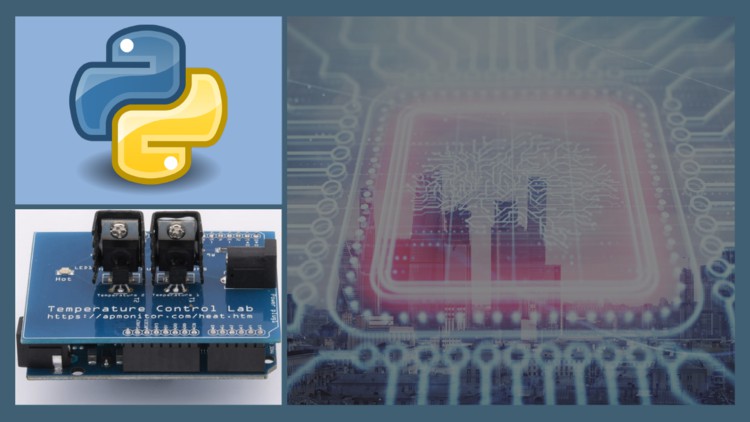
What you will learn
Visualize data to understand relationships and assess data quality
Understand the differences between classification, regression, and clustering and when each can be applied
Detect overfitting and implement strategies to improve prediction
Understand engineering and business objectives to plan applications
Implement data science techniques successfully to complete a project
Description
These modules are intended to help you develop data science and machine learning skills in Python. The 12 modules have video tutorials for each exercise with solutions for each exercise. One of the unique things about these modules is that you work on basic elements and then test your knowledge with real data exercises with a heat transfer design project. You will see your Python code have a real impact by designing the materials for a new product.
One of the best ways to start or review a programming language is to work on a project. These exercises are designed to teach data science Python programming skills. Data science applications are found across almost all industries where raw data is transformed into actionable information that drives scientific discovery, business innovations, and development. This project is to determine the thermal conductivity of several materials. Thermal conductivity is how well a material conducts or insulates against heat transfer. The specific heat transfer project shows how to apply data science to solve an important problems with methods that are applicable to many different applications.
Objective: Collect and analyze data from the TCLab to determine the thermal conductivity of three materials (metal, plastic, and cardboard) that are placed between two temperature sensors. Create a digital twin that predicts heat transfer and temperature.
To make the problem more applicable to a real situation, suppose that you are designing a next-generation cell phone. The battery and processor on the cell phone generate a lot of heat. You want to make sure that the material between them will prevent over-heating of the battery by the processor. This study will help you answer questions about material properties for predicting the temperature of the battery and processor.
Topics
There are 12 lessons to help you with the objective of learning data science in Python. The first thing that you will need is to install Python to open and run the IPython notebook files in Jupyter. There are additional instructions on how to install Python and manage modules. Any Python distribution or Integrated Development Environment (IDE) can be used (IDLE, Spyder, PyCharm, and others) but Jupyter notebook or VSCode is required to open and run the IPython notebook (.ipynb) files. All of the IPython notebook (.ipynb) files can be downloaded. Don’t forget to unzip the folder (extract the archive) and copy it to a convenient location before starting.
- Overview
- Data Import and Export
- Data Analysis
- Visualize Data
- Prepare (Cleanse, Scale, Divide) Data
- Regression
- Features
- Classification
- Interpolation
- Solve Equations
- Differential Equations
- Time Series
They give the skills needed to work on the final project. In the final project, metal coins, plastic, and cardboard are inserted in between the two heaters so that there is a conduction path for heat between the two sensors. The temperature difference and temperature levels are affected by the ability of the material to conduct heat from heater 1 and temperature sensor T1 to the other temperature sensor T2.
You may not always know how to solve the problems initially or how to construct the algorithms. You may not know the function that you need or the name of the property associated with an object. This is by design. You are to search out the information that you might need using help resources, online resources, textbooks, etc.
You will be assessed not only on the ability of the program to give the correct output, but also on good programming practices such as ease of use, code readability and simplicity, modular programming, and adequate, useful comments. Just remember that comments, indentation, and modular programming can really help you and others when reviewing your code.
Temperature Control Lab
The projects are a review of all course material with real data from temperature sensors in the Temperature Control Lab (TCLab). The temperatures are adjusted with heaters that are adjusted with the TCLab. If you do not have a TCLab module, use the digital twin simulator by replacing TCLab() with TCLabModel().
Content